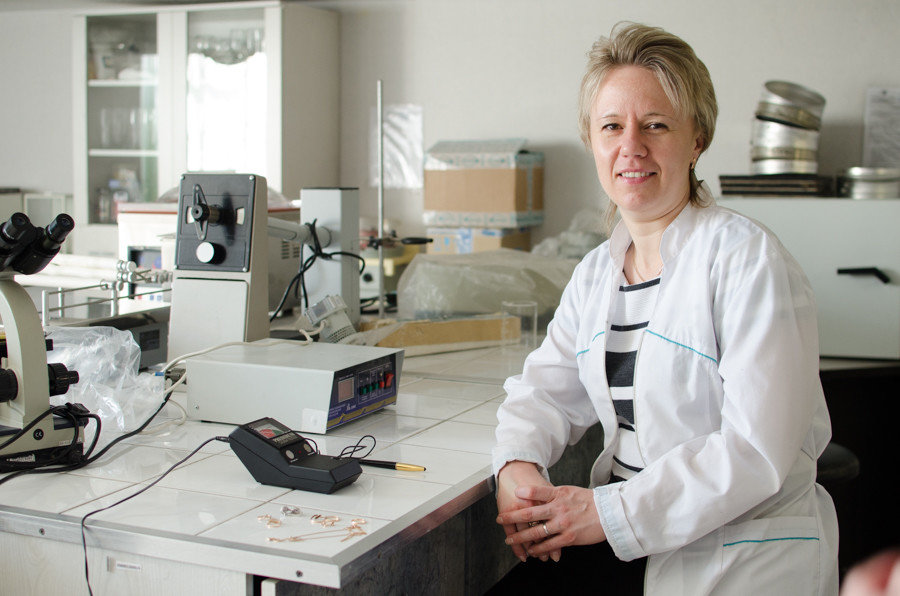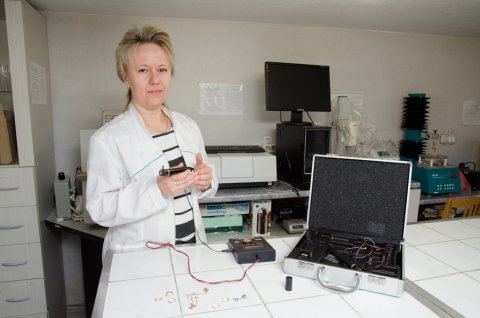Traditionally, gold is a symbol of prosperity. It has been valued throughout the history of humankind. Gold is not just for pleasure; it is also a good investment, only if, of course, you’ve bought some real gold, not a fake.
How can you protect yourself from scammers and spot the fake? Natalia Popova, associate professor at the School of Medical Biology, SUSU, will share her knowledge on how to do that.
“Gold is a soft metal. Pure gold isn’t used often. A 585 marking on gold jewelry means there’s 58.5% gold in it, the rest being different impurities to increase the hardness.”
According to the Research Institute of Jewelry Technology, half of the gold jewelry presented in the market is fake. Natalia Popova explains different types of fake gold:
Blending. Part of the jewelry consists of real gold, the other half being a metal similar to gold. This method is often used for making chains and bracelets/
Gold-plated jewelry. A piece of cheap jewelry is covered with a thin layer of gold.
“Our equipment isn’t able to detect the fake if it’s plated with a layer of gold. To see what’s inside, we have to cut it.”
Gold-like metals. They include brass, bronze, and aluminium, that is, the metals that have gold-like appearance.
Covering. The process in which a base metal is covered with a layer of a noble metal. That way, the jewelry gets heavier and can be sold at higher price. The fake can be detected only when cutting the jewelry.
Hallmark discrepancy. The higher purity mark is put on the jewelry, the purity of which is much lower.
“This happens because people have learned to pay attention to it. Now it’s much harder to determine whether the hallmark corresponds to the purity of gold right at the shop,” believes Natalia Popova.
Natalia Popova recommends several methods to test your gold jewelry at home.
.jpg)
Vinegar test. Place your gold jewelry into a cup of vinegar. Fake gold will change colors, whereas real gold will shine.
Bite test.
“We often see this method in movies, when a person bites a piece of gold to test it. This method really works. The better the quality of gold, the bigger mark your tooth should leave on it. Yet, another soft metal is lead, so the bite method isn’t always reliable,” shares Natalia Popova.
Ceramic plate test. Find an unglazed ceramic plate to use. Drag your item across the surface. A black streak means your gold is not real, whereas a gold streak indicates your item is genuine.
Magnet test. Gold is not a magnetic metal. If it pulls towards, or sticks to the magnet, it’s fake.
Iodine test. Iodine can easily detect counterfeit gold. Put several drops of iodine on your jewelry.
“If the metal gets dark, it’s a fake. Iodine doesn't react with gold, that is, doesn’t leave any marks on it.”
All these methods are effective only if you have an apparent fake. How can you test what is beneath the thin gold layer?
“Slightly scrape the jewelry in an unnoticeable place. If it’s a fake, then the plated layer will peel,” adds the expert.

The most common fake in the gold market is brass which looks similar to gold. Carefully examine your jewelry. The smallest difference in color means it is a fake. It is also an effective method of telling the difference between white gold and silver. Silver is of cool hue. Also, white gold does not leave any trace on a paper, in comparison with silver.
If you doubt the quality of your jewelry, take it to the specialized laboratory. The chemical and spectral analyses will reveal fake gold. Pay attention to the jewelry of unusual forms and the hallmark and keep the receipt.
These simple steps will help you to avoid buying counterfeit gold jewelry.




